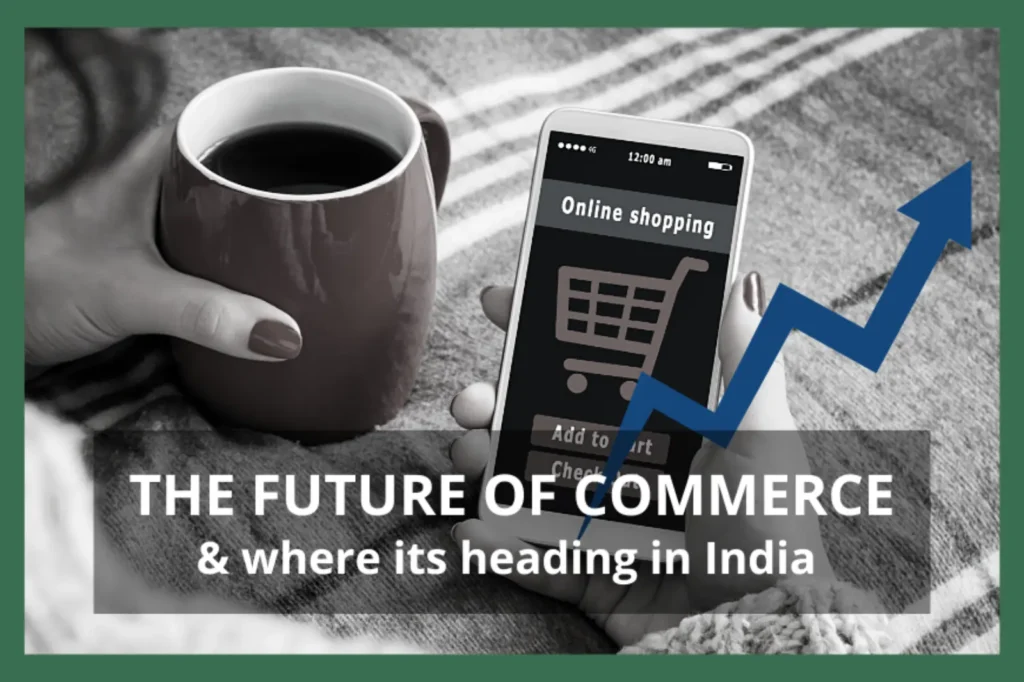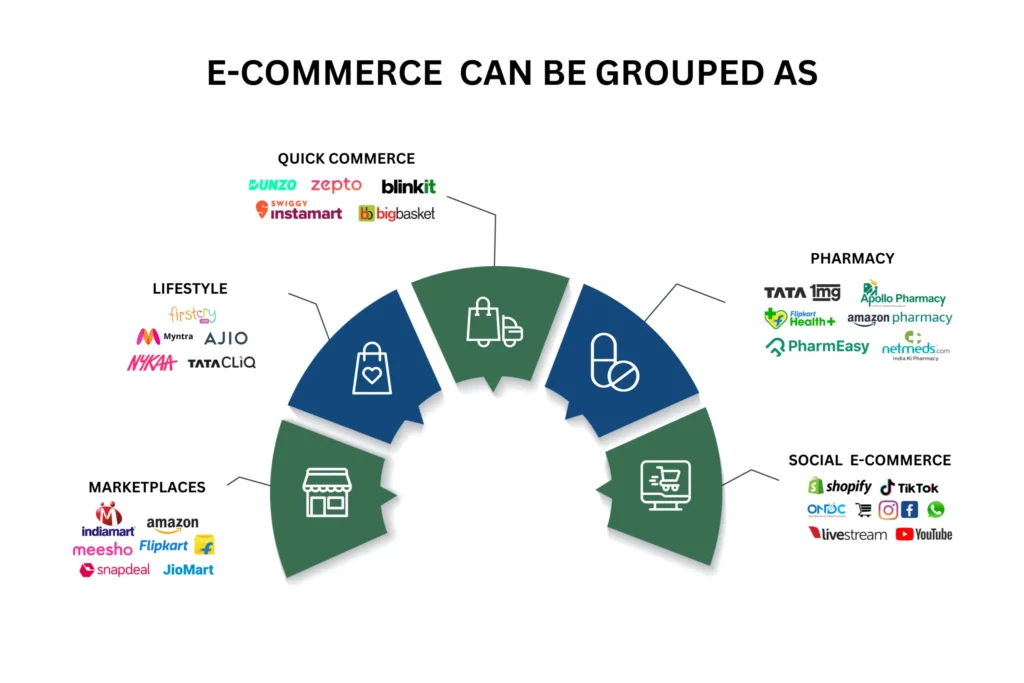
If you are a brand that sells grocery items, you are likely to sell on all
- Marketplaces
- Website
- Social channels
- Quick Commerce
Whereas if you are a lifestyle or clothing brand, quick commerce is not relevant, but the channels that will definitely be relevant are
- Marketplaces
- Website
- Social channels
- Lifestyle eCommerce
The evolution of quick commerce has disrupted the way people consume FMCG items, and it is molded towards the ever-evolving day consumer willing to pay a premium for convenience.
Quick commerce has had a massive impact on Amazon, Big Basket, and Flipkart grocery businesses, and they are struggling to find a way to claw back market share from Quick commerce leaders Zepto and Swiggy Instamart.
The way consumers are also evolving in how they discover new brands is rapidly changing as people can directly shop on Facebook, Instagram, and Youtube if they come across a product they like.

E-Pharmacy is a business that has grey areas, and the government has put a lot of restrictions on people who can sell pharma products online and rightly so, as it is to protect the consumer. The Drug departments central and state are yet working on policies so that there is no misuse of prescription drugs when purchasing them online, hence Amazon Pharmacy and Flipkart Health are only in the pilot phase.
So how brands distribute their sales across these channels and marketing budgets which have the most optimal profitability by channel is critical for each brand to analyze where they are getting optimal mileage for the money spent.
We are still in various nascent stages of eCommerce in India, and it currently only represents 5% -8% of total retail sales in India.
While its early stages, one thing is for sure eCommerce is the future, and this share will only get bigger.

